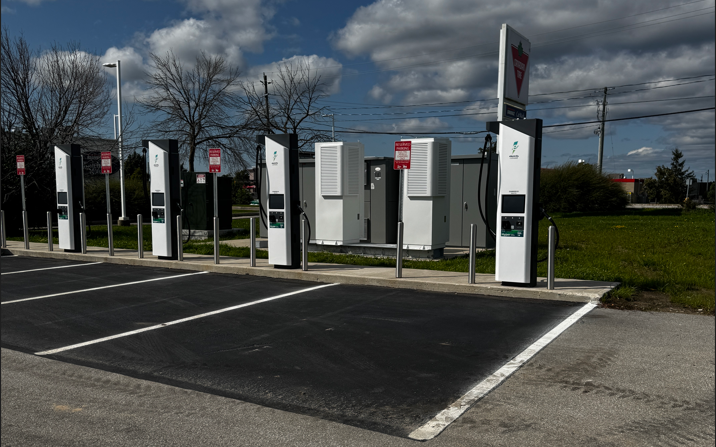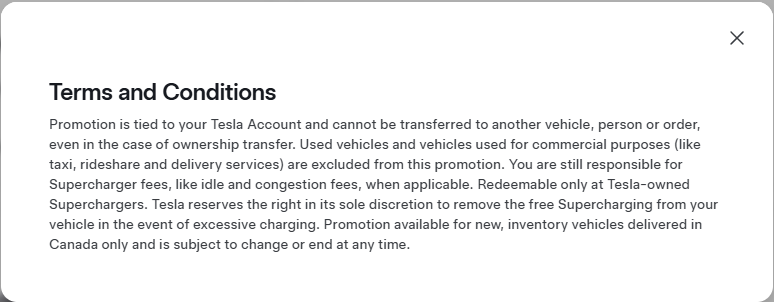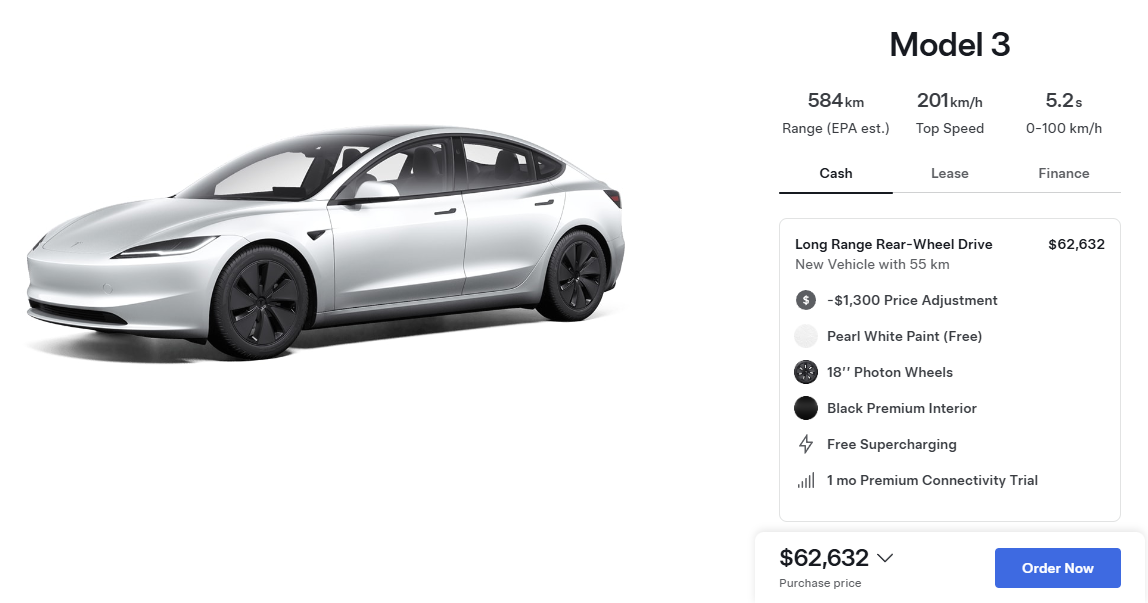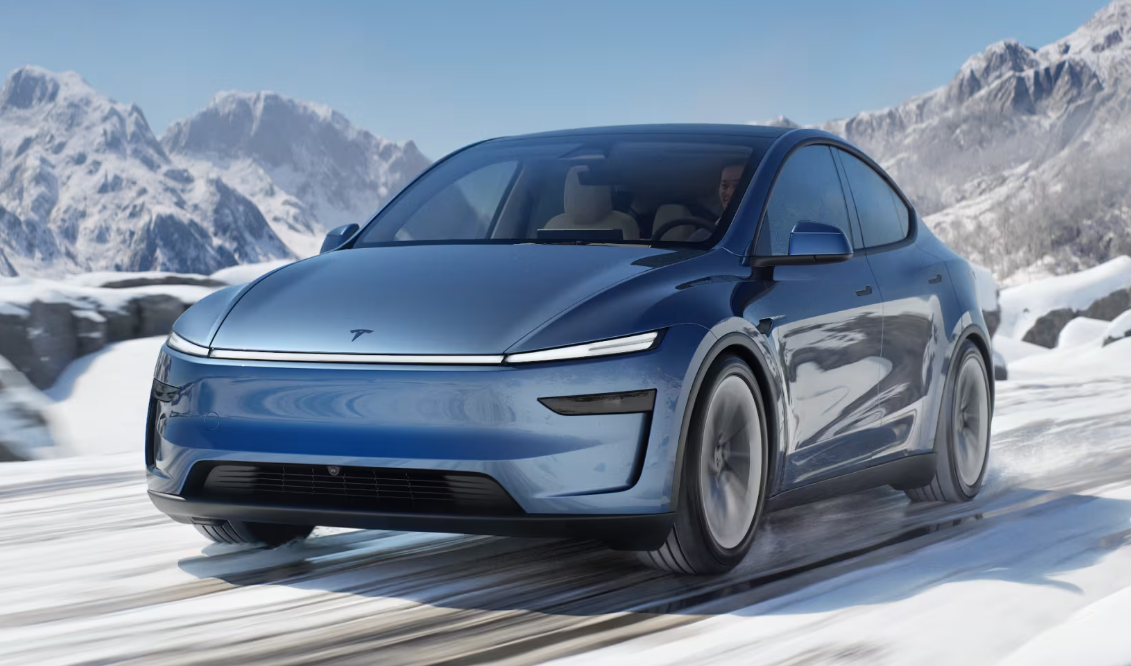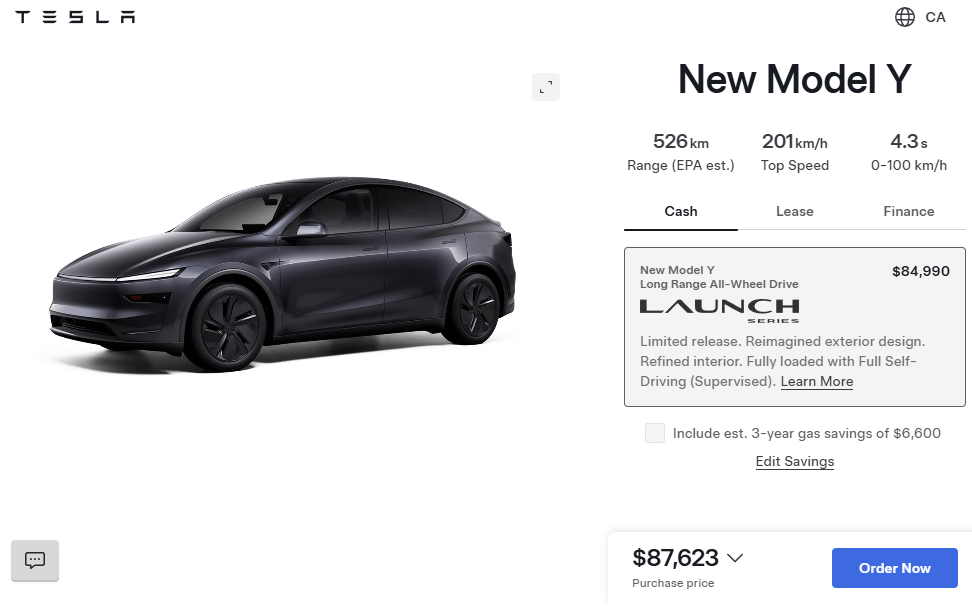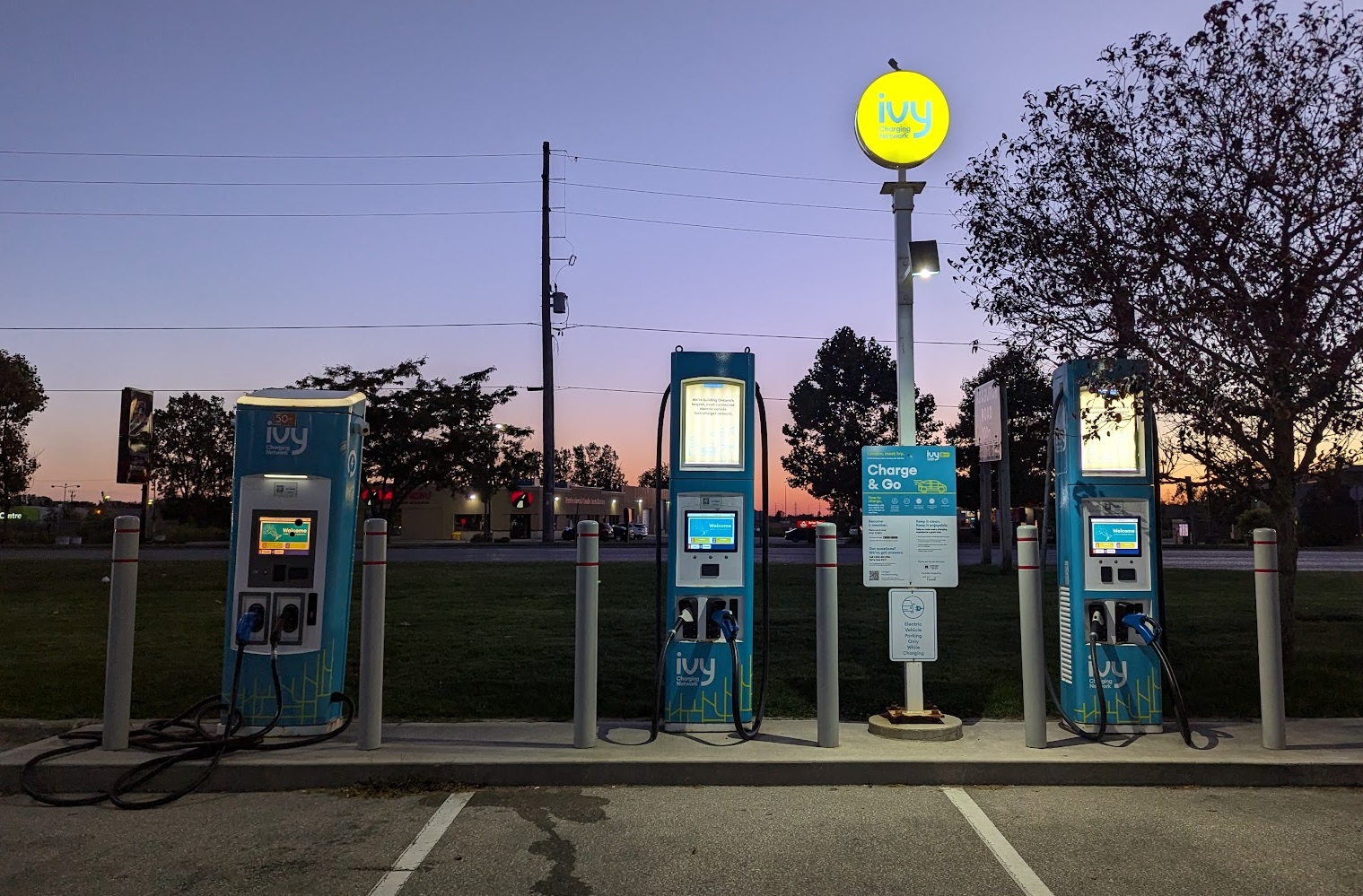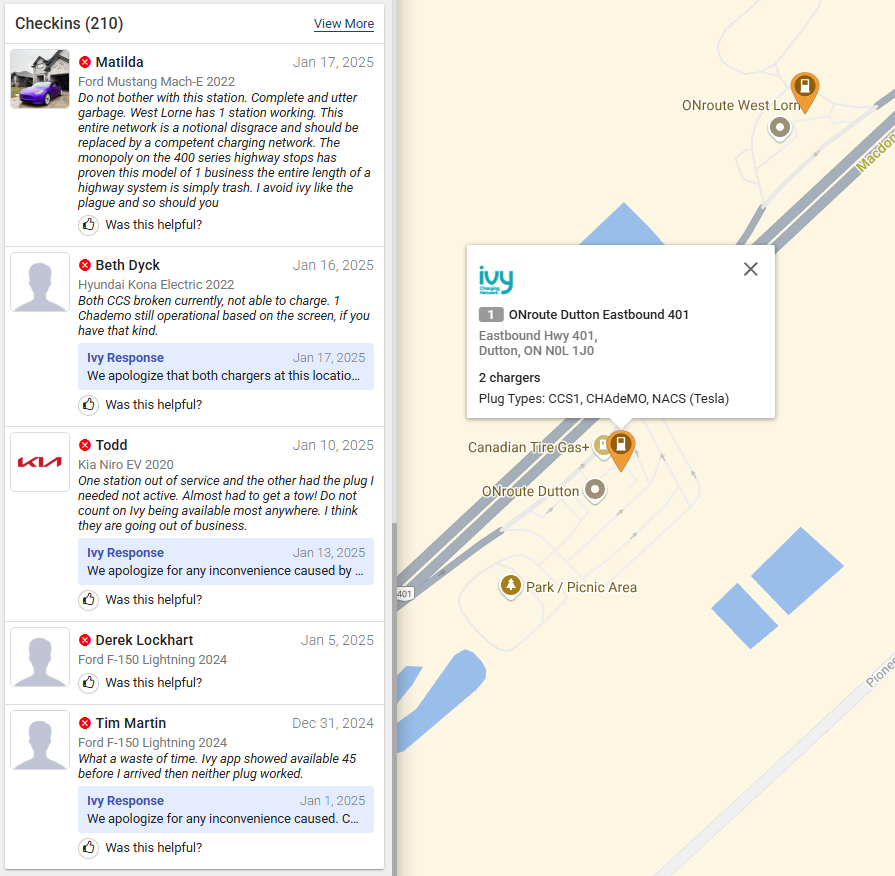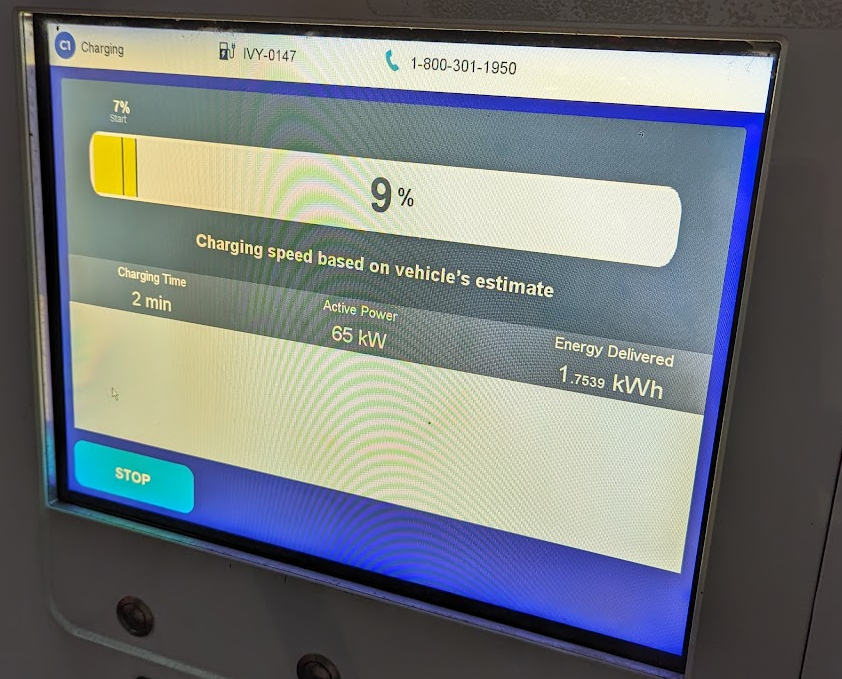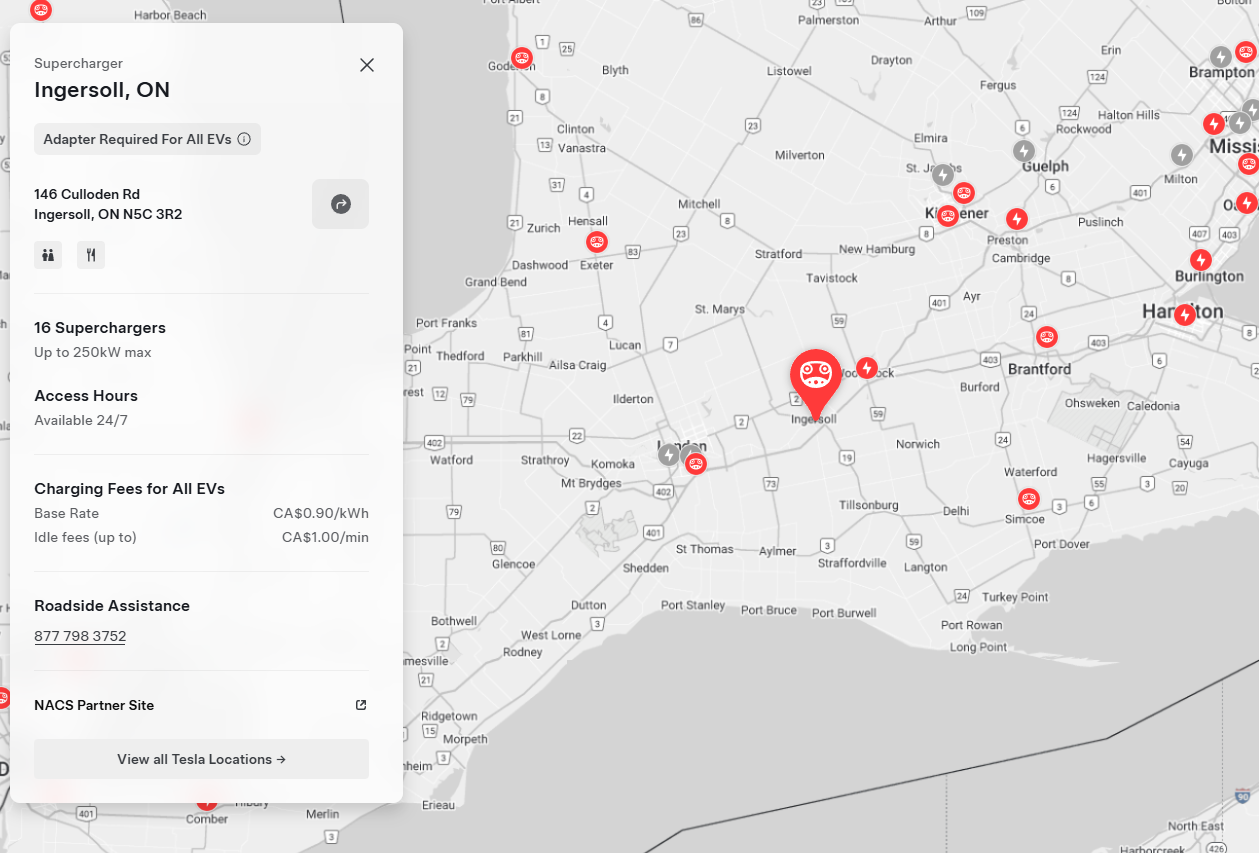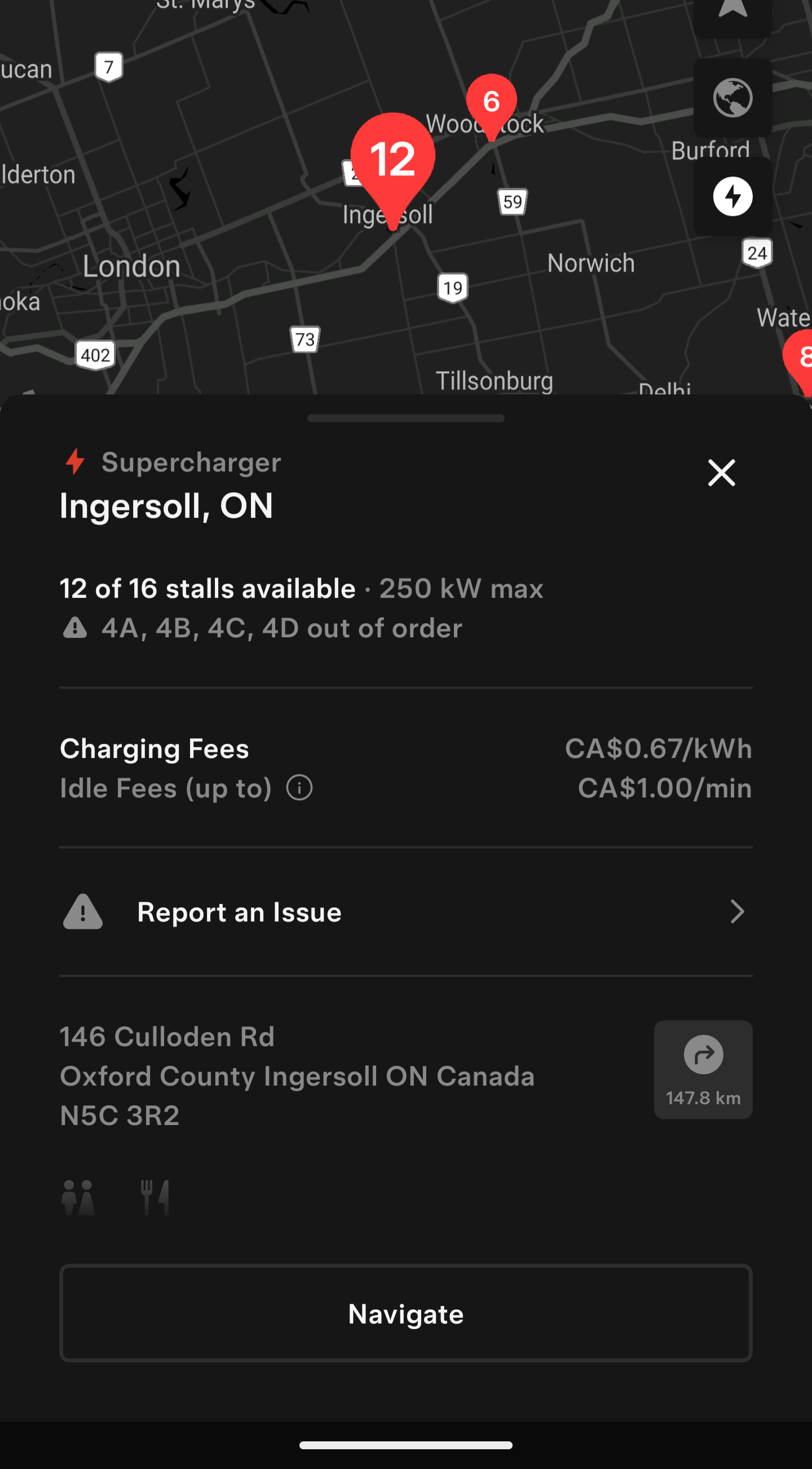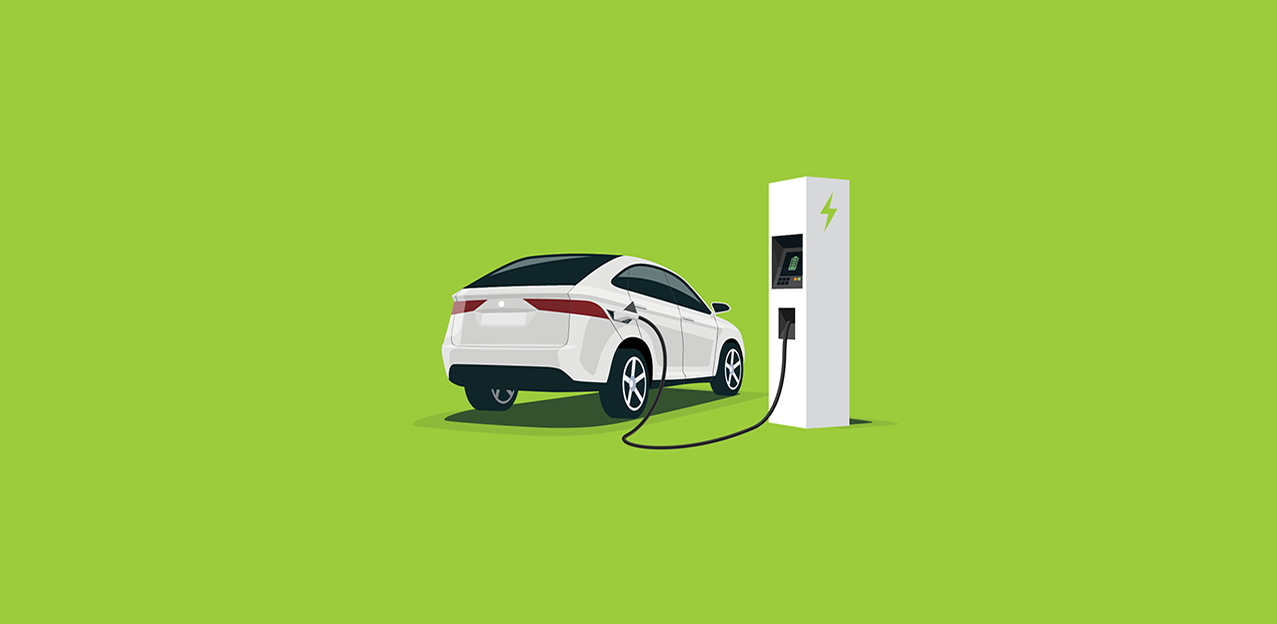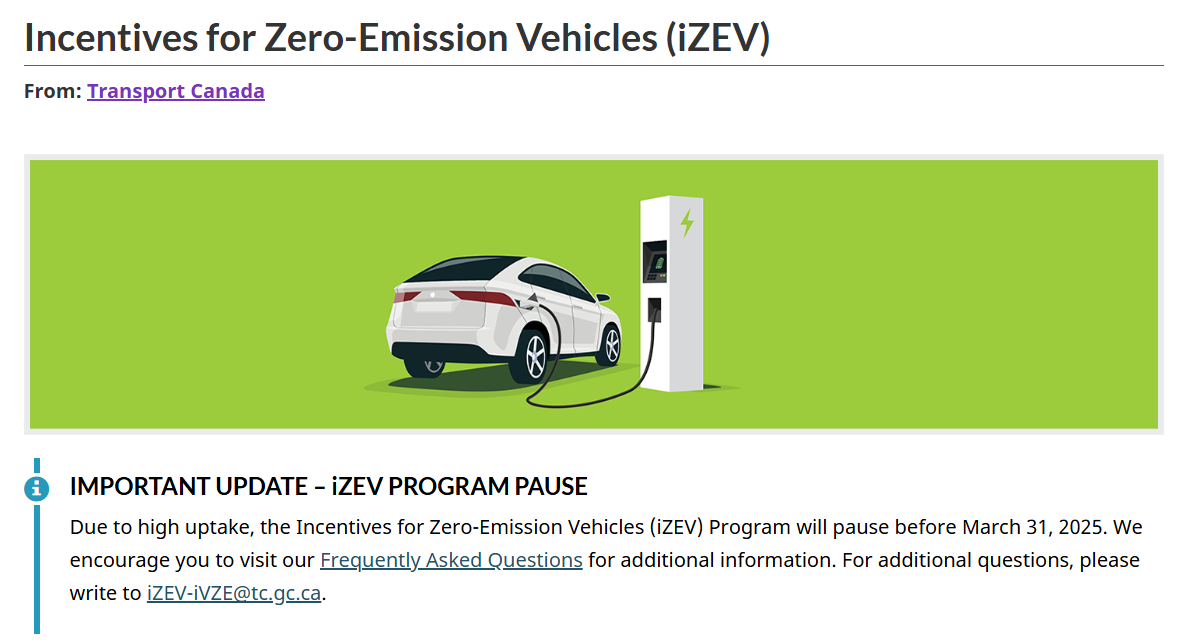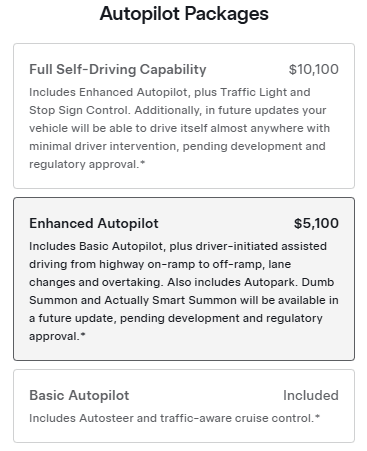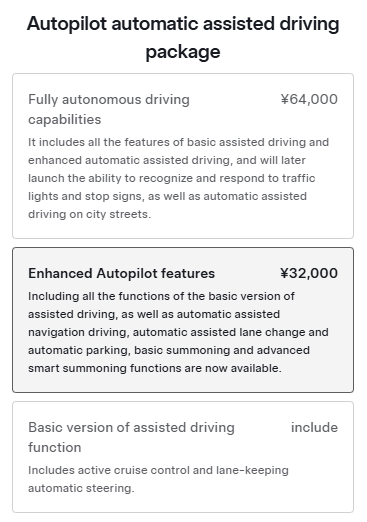Electrify Canada has blessed Ontario with a long-overdue fast-charging site in Owen Sound — the first new location in years for the network in the province. Fortunately, they chose a spot that genuinely needed coverage, making this the fastest charger in the area.
The new site includes:
- 4 CCS-only stalls (sorry NACS/CHAdeMO drivers)
- Up to 350 kW per charger
- Convenient location at 1605 16th Street E, Owen Sound, ON N4K 5N3
For EV drivers (other than Tesla drivers, since there’s already a Supercharger in town) across Grey Bruce County and the Georgian Bay area, this station fills a huge gap in fast-charging coverage. Until now, longer trips through the region could feel like rolling the dice on range — especially for visitors heading up to Tobermory.
With this move, Electrify Canada is showing it hasn’t completely ghosted Ontario expansion. Still, their overall ambitions remain questionable. This Owen Sound site, for example, has been under construction since 2022. Meanwhile, major travel corridors remain uncovered: there’s still nothing in Muskoka, Huntsville, Parry Sound, or northern Ontario. Even busy routes like Kingston–Oshawa and Hamilton–Niagara Falls are ignored.
The hope is that Owen Sound marks a turning point rather than a one-off. Canada’s growing EV fleet needs more than Tesla’s mushrooming Supercharger network — and Electrify Canada still has a big role to play if it wants to stay relevant.
It’s also worth noting that Electrify Canada is one of the most expensive charging networks in the province, at $0.79/kWh (including tax). By comparison, Tesla’s Supercharger in town costs $0.46/kWh (Tesla lists prices with tax included). For Tesla drivers, Electrify Canada would cost almost twice as much. At present, Electrify Canada appears to have little interest in competing on price or attracting a wider customer base. For most drivers, this station should be treated as an emergency option given the steep rates — unless the company reconsiders its pricing strategy in the future..

